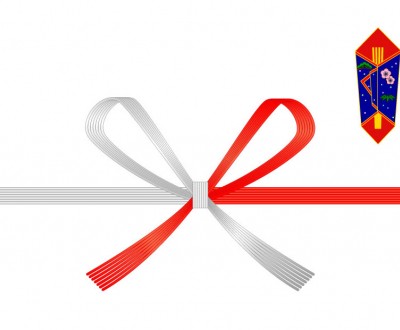How to offer a present in Japan
There are many occasions on which Japanese people give gifts, and some are considered a type of social duty:
- Birthdays, weddings, births and funerals;
- New Year’s celebration and, more recently, Valentine’s Day/White Day or Christmas;
- Return from a travel, either abroad or domestic;
- The period of 中元 chûgen at the beginning of summer, or 歳暮 seibo a little before winter;
- Children’s ceremonies (七五三 shichi-go-san, first day of school, becoming adult, graduation, etc.);
- Requesting the services of a colleague or neighbor;
- Visiting a friend or a close relative at the hospital.
Overall, gift giving in Japan helps maintain and strengthen social relationships.
The gift-giving culture is so developed in Japan that, for example, お土産 omiyage (regional souvenirs, often food) have their own dedicated stores, called 専門店 senmonten, and their annual sales are huge.
The process of giving gifts remains relatively codified —more so in Western countries— sometimes up to being a small ceremonial process. It is therefore advised to know proper protocols so as to avoid awkward moments when choosing and offering.
Good practices and beliefs
A big advantage in Japan is that a large majority of stores offer "ready-to-give" objects to support this gift-giving culture. Some presents are already wrapped before being placed on the shelves. If not, many merchants will propose wrapping up the purchased products or sending them directly to recipients with a small note.
Sometimes, price tags are deliberately left on gifts. This helps gift givers find the right balance, so that their present is not perceived as being too cheap or too expensive. Indeed, the receiver should not be embarrassed: in numerous cases, we offer a return gift of the same or slightly lower value.
If a gift is hand delivered, it must be presented with two hands and received the same way in addition to a more or less marked, thankful bow. Beforehand, it is customary to play a little polite game:
- The giver verbally diminishes the importance of his gesture and of the gift;
- The receiver refuses the gift at first and then accepts it after contemplation.
Usually, presents are not unwrapped in front of the giver unless the latter suggests it, for example to explain the nature of the present or to justify the choice. If this is the case, the opening should be done with delicacy.
Traditional wrapping calls for a specific paper called 掛け紙 kakegami, circled by an elegant 水引 mizuhiki ribbon. The color and knotting vary according to the event: in the case of a celebration, for example, we respect a red and white code for births and white and gold for weddings. A small origami decoration called a 熨斗 noshi completes the gift and brings luck to the recipient.
This same wrapping schemes also apply to envelopes used to offer money (new) on several occasions, including:
- 熨斗袋 Noshibukuro for births or weddings;
- 年賀状 Nengajo for the New Year.
Numbers and meanings to avoid
In addition to these recommendations, Japanese people also avoid spoiling a gift based on traditional beliefs.
Thus, it is advised to avoid offering:
- Gifts that include the numbers 4 (shi) and 9 (ku), the respective homophones of 死 "death" and 苦 "suffering";
- A comb, which is said to be a 櫛 kushi and thus combines the two kanji above;
- White flowers outside of funerals, with which they are associated;
- Scissors, especially at weddings, as they indicate "cutting" the relationship.


